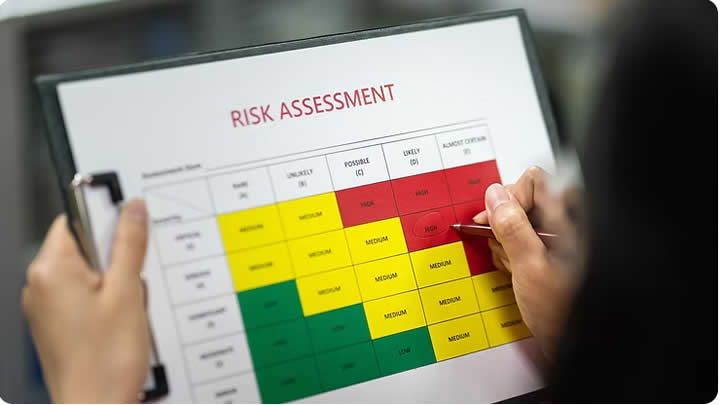A well-executed Process Hazard Analysis (PHA) is a vital safeguard, helping teams identify potential risks and define the controls needed to mitigate them. But a PHA isn't a one-time event. As facilities and operations evolve, so must the analysis.
 PHA Revalidations | Beyond Checking Boxes
PHA Revalidations | Beyond Checking Boxes

Carolyn Bott, Process Safety Group Manager | aeSolutions
What is a PHA Revalidation?
Unlike a first-time PHA, a revalidation starts with reviewing the previous study. The team evaluates modifications — be it process design, control systems, staffing, procedures, or incident history — and determines whether those changes introduce new risks or warrant updates to the previous Process Hazard Analysis study.
It should be noted that in some cases, a facility may determine that the existing PHA is no longer a reliable baseline — perhaps because of major modifications, process redesign, or poor quality in the original study. In these situations, a full PHA redo may be the better option.
Methodologies Commonly Used in PHA Revalidations
-
HAZOP (Hazard and Operability Study): A systematic, guideword-based approach for continuous and batch processes
-
LOPA (Layers of Protection Analysis): A method for evaluating the effectiveness of protection layers in reducing the frequency or consequence severity of hazardous events
-
What-If and Checklist Analyses: Useful for simpler systems or as supplementary tools
-
HAZID (Hazard Identification Study): Often applied in the early design phase or as a high-level review
-
FMEA (Failure Modes and Effects Analysis): Focuses on component-level failure scenarios
-
Bowtie Analysis: Visual mapping of causal pathways and safeguards for major hazards
These methodologies are not mutually exclusive — they are often used in combination. The chosen methodology(s) should match the process and risk profile.
Regulatory Requirements and OSHA Expectations for PHA Revalidations
OSHA further clarifies that a PHA revalidation doesn’t need to start from scratch. It can build upon the previous PHA, provided the review is thorough and documented. Failing to properly revalidate — whether by missing the five-year deadline or conducting an insufficient review — can lead to citations and increased risk exposure.
Should I Revalidate Sooner Than Five Years?
- Significant process changes such as new equipment, revised control strategies, or major throughput adjustments
- Facility expansions or new unit operations
- Introduction of new chemicals or process conditions
- Recurring incidents or near misses suggesting underlying hazards were missed
- Internal audits that identify PHA gaps or non-compliance
- - Evolving industry standards or new safety guidance that impact existing risk assessments
In such cases, updating the PHA before the five-year mark can strengthen safety performance and demonstrate due diligence to regulators and insurers.
Five Common Challenges in PHA Revalidations
Executing a quality PHA revalidation takes planning, expertise, and cross-functional engagement. Below, we describe five common challenges that facilities face when conducting a Process Hazard Analysis Revalidation.
1. Inadequate Documentation and Information Management
2. Loss of Key Knowledge and Stakeholder Engagement
3. Poor or Inconsistent Methodology Application
4. Underestimating Time and Resources Required
5. Failure to Close Gaps from Previous PHA Recommendations
Anticipating and addressing these challenges early can significantly improve the quality of your PHA revalidation process.
Best Practices for an Effective PHA Revalidation
-
Prepare thoroughly: Update your process safety information, drawings, procedures, and incident history before the first team meeting. Performing this type of “mini audit” of changes and process safety performance since the last PHA will help drive the revalidation scope.
-
Engage experienced facilitators: Facilitators with expertise in the methodology selected for the reval can guide the process and ensure consistency across nodes and scenarios. Ultimately, your PHA Reval team should consist of experienced operations personnel, engineers familiar with the process, and a competent facilitator. Additionally, involving members from the original PHA team and/or certified PHA leaders can benefit the effort.
-
Involve stakeholders: Cross-functional support from those in operations, engineering, maintenance, and even management stakeholders who understand the process will increase your ability to maintain consistency and accuracy throughout the revalidation process.
-
Verify implementation of past recommendations: A revalidation is an opportunity to check the status of all previously identified hazards. Best practice is to explicitly review how each risk scenario identified last time has been addressed. The team should verify that no known hazard has been forgotten. If some recommendations were deferred or not resolved, this is the time to reassess those risks and decide on an action. Additionally, incorporate any relevant incident learnings (from your site or industry) to enhance the prior analysis​. By looping back on past findings and new learnings, the revalidation closes gaps and solidifies your facility’s risk baseline.
-
Document and track everything: Just as you review old recommendations, establish a strong process for following through on new PHA recommendations coming out of the revalidation. This includes clearly prioritizing them (e.g. using a risk matrix or LOPA results to rank urgency), assigning responsibility, and setting deadlines. Remember, OSHA requires documented resolution of PHA recommendations​ — having a tracking system not only aids safety but keeps your facility compliant.
-
Consider partnering with a qualified PHA facilitator: One of the best investments for a successful PHA revalidation can be partnering with a skilled facilitator. An experienced, third-party PHA facilitator can provide a litany of benefits — including chemical and process knowledge across industries. Beyond providing expert guidance, facilitators can also serve as an objective, unbiased perspective. When considering an external PHA facilitator, look for a provider who goes beyond “checking the boxes.” Facilitators should also offer effective prioritization of risks and recommendations. Additionally, a facilitator should be able to present an actionable gap closure game plan that includes recommendations for trusted engineering solutions providers who can support resolving identified issues.
You’ve Completed Your PHA Reval — What Next?
A successful PHA revalidation doesn’t end when the last worksheet is signed. The real value comes from implementing recommendations and closing identified gaps. At this stage, facilities should:
- Prioritize recommendations using risk matrices or LOPA to focus efforts on high-consequence scenarios
- Develop actionable plans for implementation, assigning ownership, and tracking progress
- Work with a facilitator or engineering partner who can help close common recommendations such as SIS upgrades, BPCS changes, Alarm Management improvements, BMS modifications, Facility Siting enhancements, and Fire & Gas system updates.
- Document closure, including verification of effectiveness and updates to procedures or training as needed
Without follow-through, a PHA revalidation becomes a compliance checkbox rather than a meaningful tool for reducing risk.
The Takeaway | Turn Your PHA Reval Findings into Forward Motion
For facilities navigating complex changes, aging infrastructure, or resource constraints, engaging with experienced PHA facilitators can bring structure, insight, and measurable outcomes to the revalidation process. When done right, PHA revalidations don’t just ensure compliance — they create a roadmap for safer, smarter operations.
The content & opinions in this article are the author’s and do not necessarily represent the views of ManufacturingTomorrow
Featured Product

